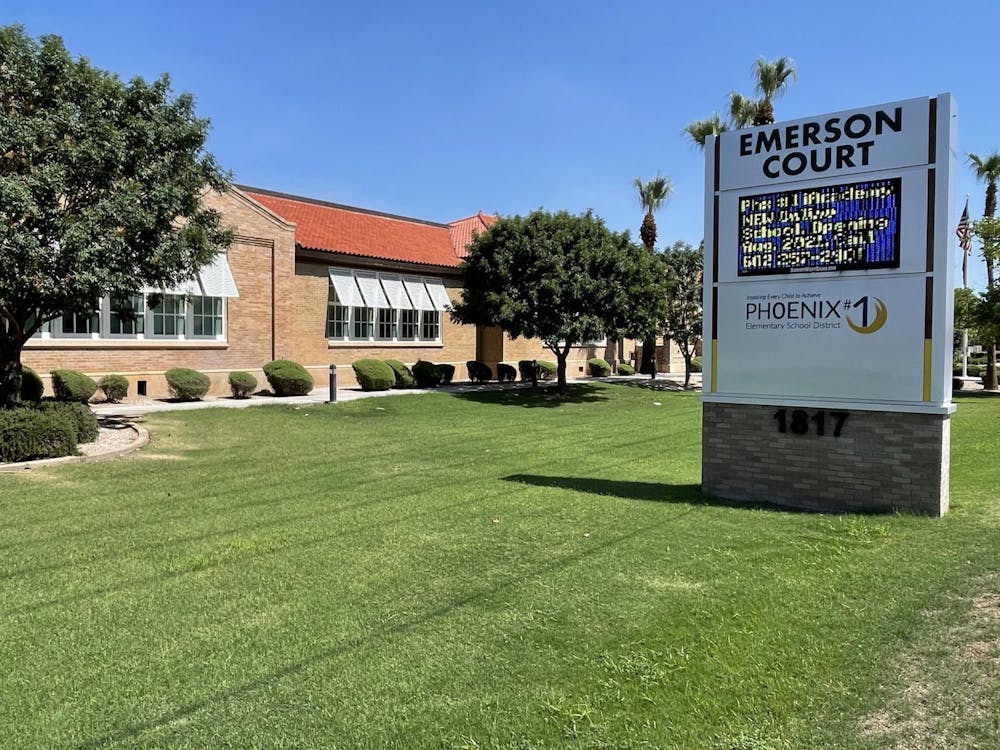Tables filled with bilingual reading worksheets in both the English and Spanish languages, teachers helping young students translate their assignments and students discussing assignments with each other in two languages — these are all common sights at schools in Phoenix Elementary School District #1.
They’re the result of an educational equity plan that is unique among Arizona schools.
78.7% of the district’s students are Hispanic, with a majority being native Spanish speakers, according to the District #1 website. Nearly one in five students in the district are English language learners or students who speak a first language other than English.
Many of the district’s students also hail from low-income backgrounds — all but two of the schools in the district are Title I schools, or institutions serving an area in which 40% or more of the students come from low-income households.
Along with this, Arizona is home to some of the most inequitably funded schools in the United States, according to a report done by Save Our Schools Arizona Network. Public education funding in Arizona has been about $3.5 billion short of the national average in per-student spending every year for almost a decade. Arizona ranks last in the nation for per-student funding. In addition, there is a vast racial disparity in Arizona school funding — the state provides $7,613 less per student in non-white districts than in white districts.
Because of institutional disparities in school funding and setbacks to childhood development that disproportionately affect students of color and children from low-income backgrounds, the district’s governing board has implemented an educational equity plan.
Governing Board President Jessica Bueno, a proponent of the plan, said that the 150-year-old school district has witnessed Phoenix’s exponential growth, but this has pushed many of its community and neighborhood members to make the sacrifices necessary to cope with the negative consequences of change.
“We have had to overcome trauma and displacement… the light-rail, I-17, the airport — all that has displaced our communities and our families,” Bueno said. “Our students often come with trauma based off of their family situations. But they are still committed to attending (Phoenix #1).”
Superintendent Ibi Haghighat discusses how exactly this education equity looks inside schools, and what it means for student’s identities within the classroom.
“For us, educational equity exists when students' behavior and academic outcomes are not predictable or based on student identity,” Haghighat said. “It’s very important that our student identities are not impacting outcomes.”
The district’s equity education plan is unique in that it focuses on providing needed resources such as free books and math guides not only to the student but also to the whole family. The plan is being implemented in all schools throughout the district, according to Nicole Baker, its executive director of communications and community relations.
The board is taking its first steps to implement these goals through districtwide school meetings in which board members invite families to learn how to continue educating their children at home. At the meetings, the board members present instructional models to the families that will help improve their children’s critical thinking and creativity skills.
By 2025, the district is also planning to set goals related to equitable access and treatment, Baker said.
As an English as a second language teacher, Haghighat gained critical insight into the challenges encountered by these students and the key resources that they hadn’t yet received.
“The struggles were understanding the language, understanding the culture, ” she said. “This has created a level of understanding and empathy for me for all populations, as we have students who represent different groups of people.”
The district encourages any students who may be struggling financially including those outside of district boundaries, to take advantage of the resources offered. They are offered in both the English and Spanish languages to accommodate any students who may need them, regardless of their language background.
“We don’t short-change any particular group, as this is a student-centered community,” Haghighat said.

